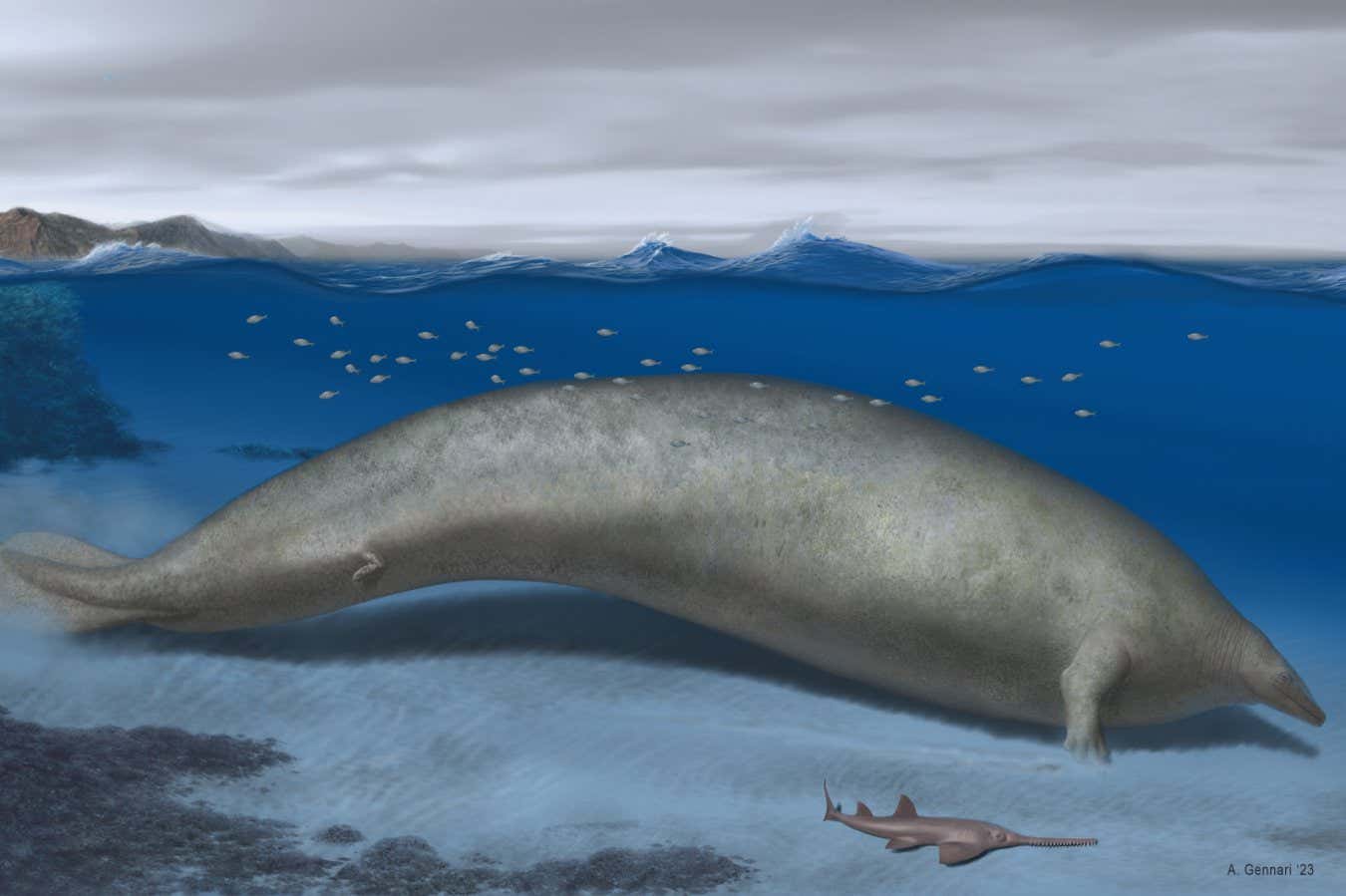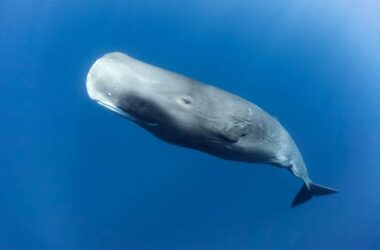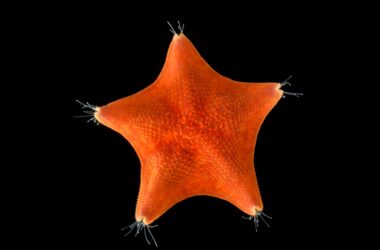An enormous species of ancient whale, known as Perucetus colossus, has been discovered in Peru and is believed to be one of the heaviest animals that ever lived. The fossils of this ancient whale were first found in 2010 during fieldwork in southern Peru. Initially, scientists were not even sure if the strange object protruding out of the ground was bone. However, after excavation, it became clear that it was the bone of an enormous cetacean.
The team of paleontologists has since unearthed more bones of this ancient whale, allowing them to construct a partial skeleton consisting of four ribs, 13 vertebrae, and a broken pelvic bone. Carbon dating of the surrounding sediment indicates that these fossils are approximately 39 million years old.
By comparing the bones to those of similar species from the same time period, researchers were able to reconstruct a model of what the complete skeleton might have looked like. Based on this model, they estimate that P. colossus measured around 20 meters in length and weighed between 85 and 340 tonnes. This makes it a strong contender for one of the heaviest animals to have ever existed, as the largest recorded blue whale weighed 190 tonnes.
The discovery of P. colossus suggests that whales may have undergone a burst in size earlier in their evolution than previously believed. This ancient whale lived close to the coast, challenging the notion that massive cetaceans are solely associated with the deep ocean. The find has expanded our understanding of cetacean evolution and how extreme gigantism can be achieved.
However, one limitation of the discovery is the absence of a skull, which leaves scientists unable to determine how this huge animal would have eaten. Further fossil discoveries are needed to shed light on this aspect of the ancient whale’s behavior and provide a more complete picture of its existence.
The remarkable find has captured the attention of experts in the field, with Lars Schmitz from Claremont McKenna College remarking on the whale’s substantial size. Neil Kelley from Vanderbilt University expresses hope that future fossil discoveries will help answer questions and provide a better understanding of this strange extinct whale.
Topics:








